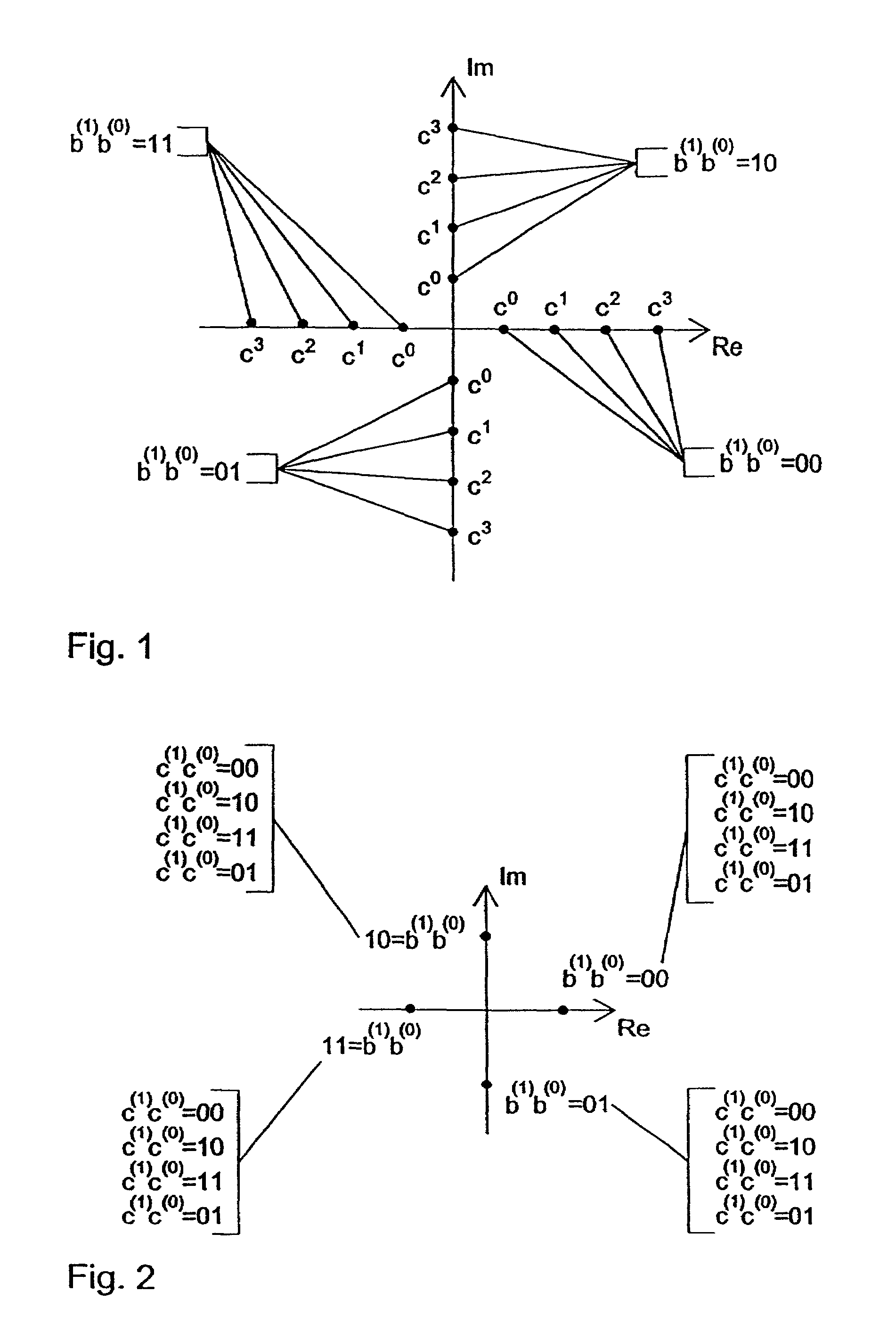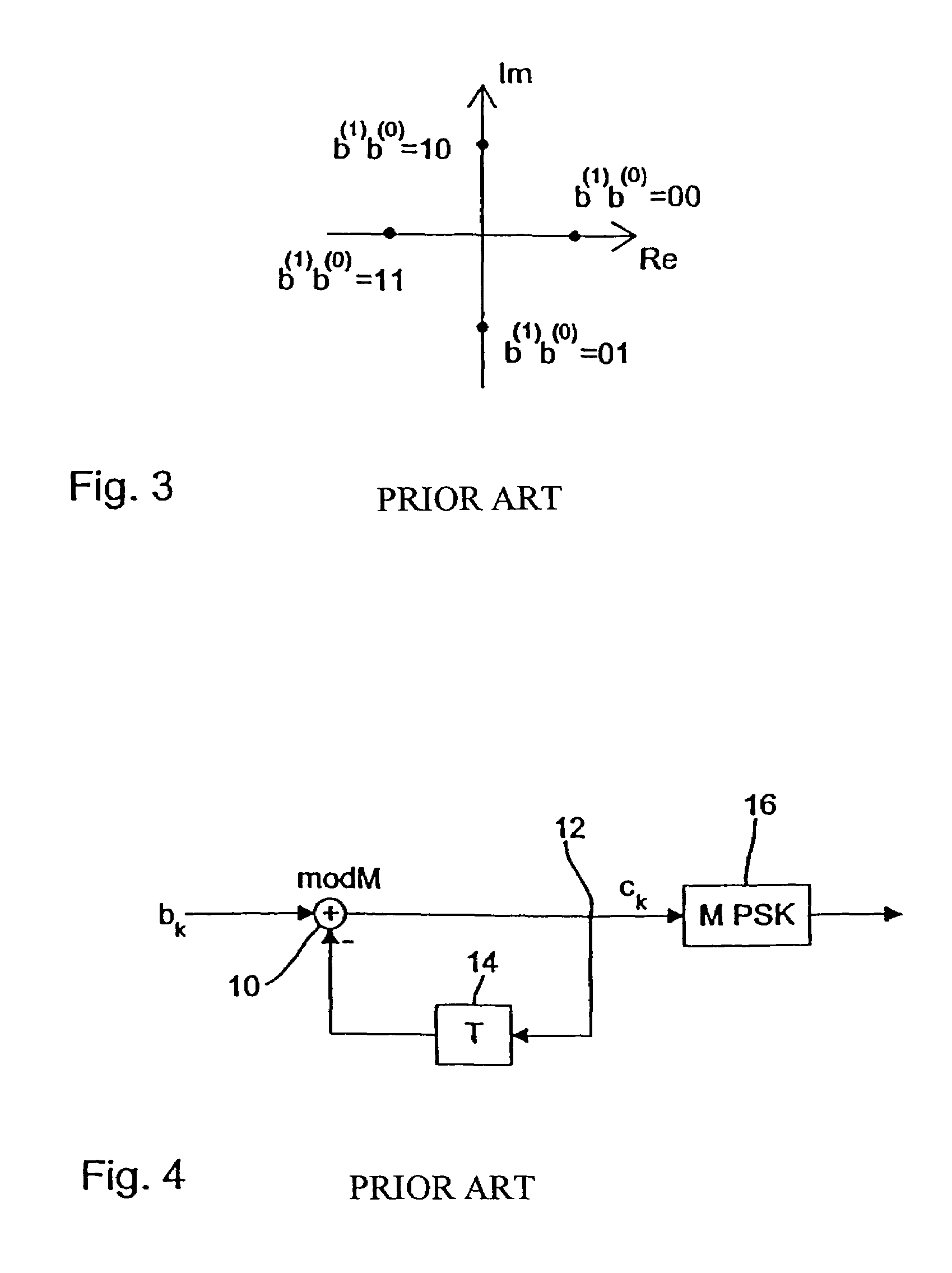Method and device for transmitting information symbols using a plurality of carriers and method and device for receiving information symbols
a plurality of carrier technology, applied in the field of digital broadcasting systems, can solve the problems of reducing the redundancy coding of the considerable quantity of digital information to be transmitted, many carriers can be (almost) completely subject to fading, information transmitted by means of these carriers is no longer available to the receiver, etc., to achieve the effect of reliably recovering the transmitted information symbols, avoiding the increase of the bit band width of the system, and working most efficiently
- Summary
- Abstract
- Description
- Claims
- Application Information
AI Technical Summary
Benefits of technology
Problems solved by technology
Method used
Image
Examples
Embodiment Construction
[0037]For derivation of the signal constellation according to the invention, reference will be made below to FIG. 3, which shows a signal constellation diagram for representing a common QPSK or DQPSK mapping (DQPSK=Differential Quaternary Phase Shift Keying). The signal constellation diagram includes four phase states, which can be represented by two bits, b(1) and b(0). From FIG. 3 it can be seen that the binary word 00 corresponds to a phase of 0 degrees, that the binary word 01 corresponds to a phase of 90 degrees (π / 2), that the binary word 11 corresponds to a phase of 180 degrees (π) and that the binary word 10 corresponds to a phase of 270 degrees (3 / 2 π). From this it can be seen that in FIG. 3, as in the entire present application, a clockwise angular turning convention is used. This is contrary to trigonometric angular turning, which, as is well known, is directed counter-clockwise.
[0038]The signal constellation diagram of FIG. 3 can be used both for normal phase shift-keyi...
PUM
 Login to View More
Login to View More Abstract
Description
Claims
Application Information
 Login to View More
Login to View More - R&D
- Intellectual Property
- Life Sciences
- Materials
- Tech Scout
- Unparalleled Data Quality
- Higher Quality Content
- 60% Fewer Hallucinations
Browse by: Latest US Patents, China's latest patents, Technical Efficacy Thesaurus, Application Domain, Technology Topic, Popular Technical Reports.
© 2025 PatSnap. All rights reserved.Legal|Privacy policy|Modern Slavery Act Transparency Statement|Sitemap|About US| Contact US: help@patsnap.com



